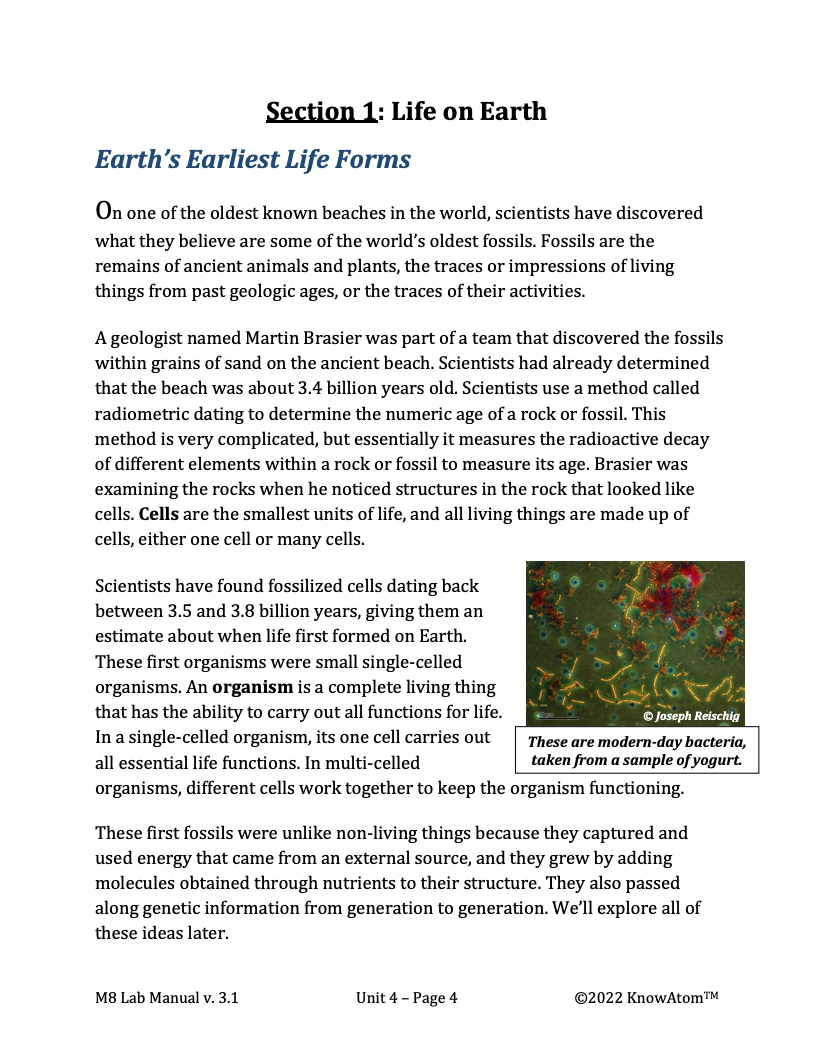
In this unit, students explore science phenomena related to life forms that live on Earth, analyzing the cellular structures that make up complex organisms and how different groups of cells work together to keep the organism functioning properly. In this lesson, students test the effect of sucrose concentration on the heart rate of daphnia, observing how different organ systems work together. This page provides a high-level extract of this lesson.
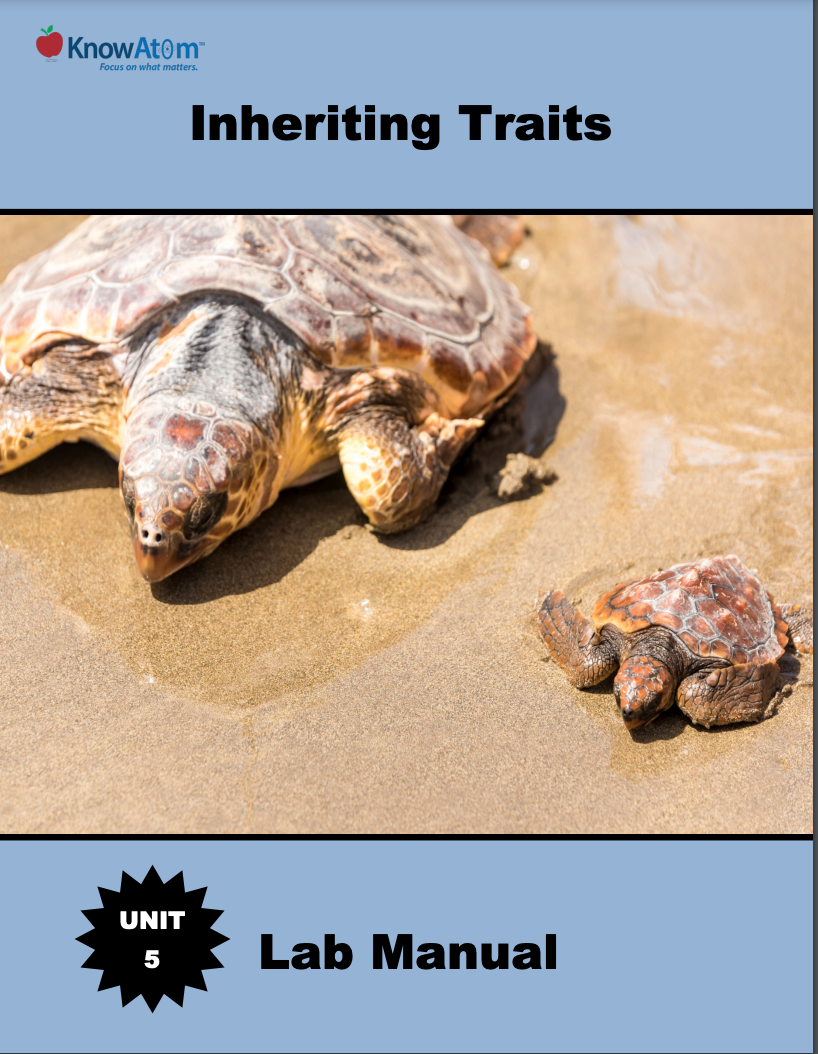
In this unit, students investigate phenomena related to how organisms pass on traits to their offspring. Students begin, in this lesson, with an investigation into how DNA codes for proteins, which determine an organism’s traits. This page provides a high level overview of this lesson.
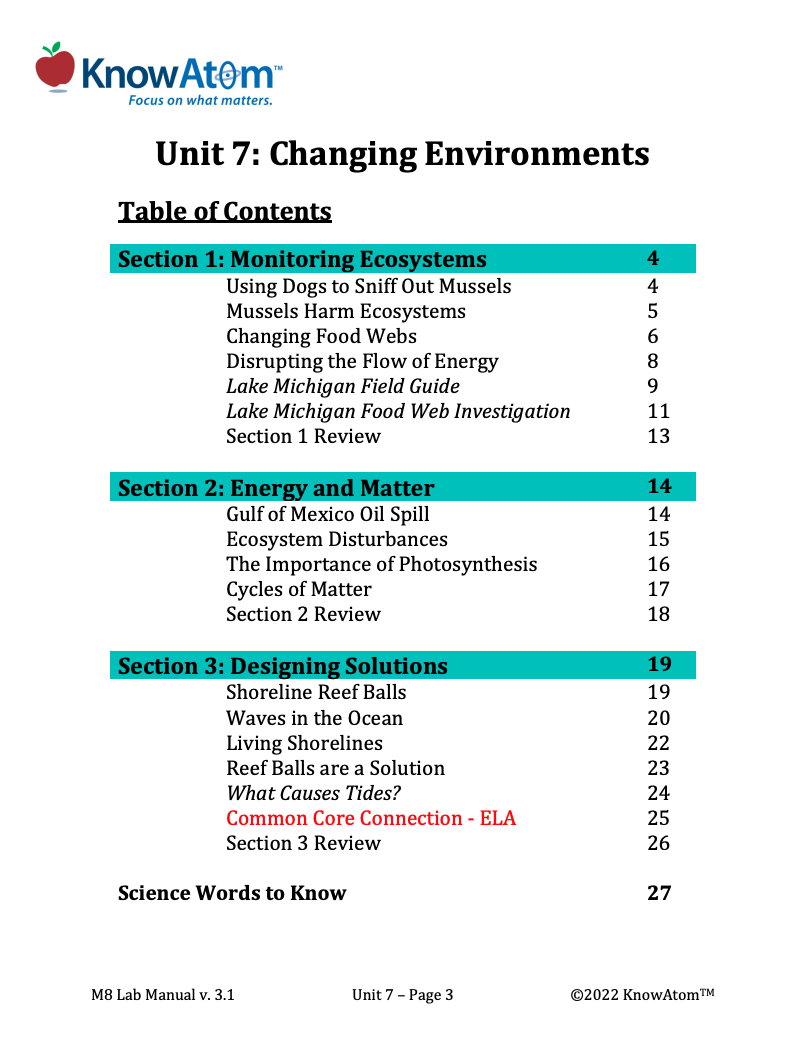
In this unit, students are introduced to the dynamic nature of ecosystems and how disturbances affect them. In this lesson, students observe the effects of an oil spill on the ability of plants to photosynthesize, which can harm an entire ecosystem. This page is a high-level extract of this lesson.
.png)
IIn this unit, students analyze the science phenomena of inheritance, how living things pass along their genes to offspring. Students evaluate the role of DNA and chromosomes in heredity, and compare the two forms of cell division: the phenomena mitosis and phenomena meiosis. This page shows key components of this lesson on reproduction.
.png)
In this unit, students explore the phenomena of rocky shore ecosystems, studying the interactions between living things and the environment. In this lesson they focus on the science phenomena of how organisms interact with one another in an ecosystem. This page showcases key elements from this lesson.
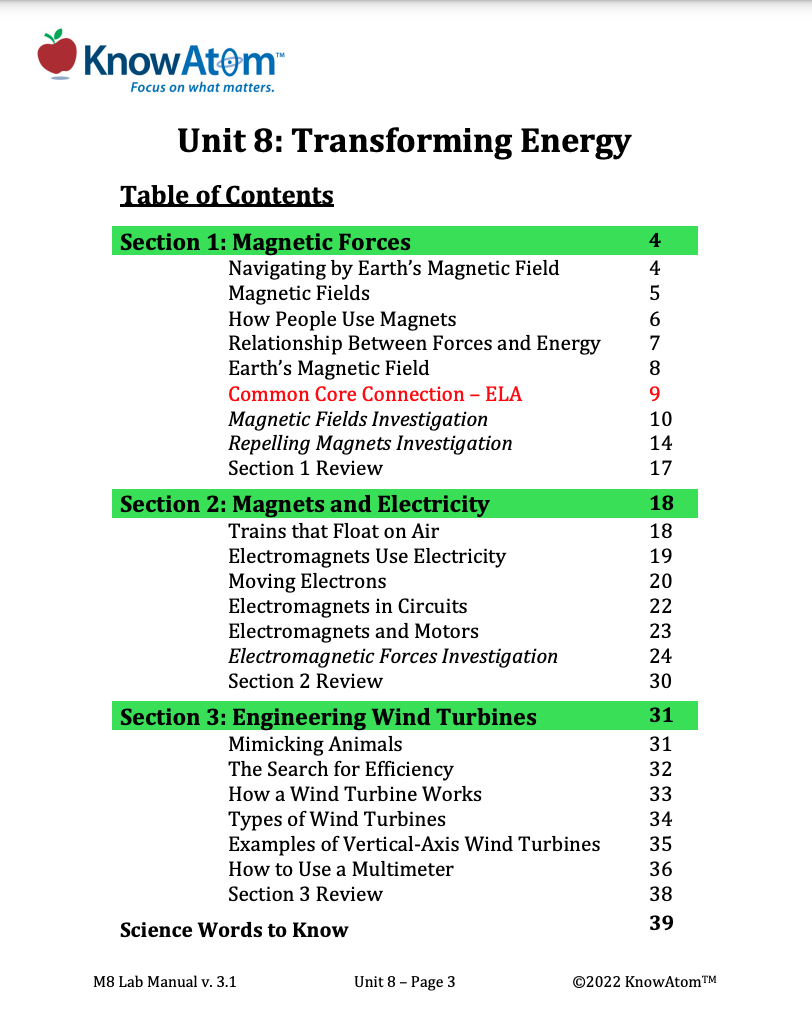
In this unit, students learn about science phenomena related to ecosystems, studying how all living things interact with and depend on other living things and the environment for survival. In this lesson, students explore how humans can create solutions to protect ecosystems by designing an engineering solution for coastal erosion.This page provides an overview of this lesson.
.png)
In this unit, students focus on the phenomena of rocky shore ecosystems and the science phenomena of how organisms interact. For this lesson, students analyze how adaptations allow for the survival of different organisms, specifically sea star structures. This is a high-level extract of this lesson.
.png)
In this unit, students explore the interconnectedness of the living and nonliving parts of an ecosystem phenomena. In this lesson, they design an experiment to test how heat is transferred in different materials found on the rocky shore. This page provides a brief overview of this lesson.
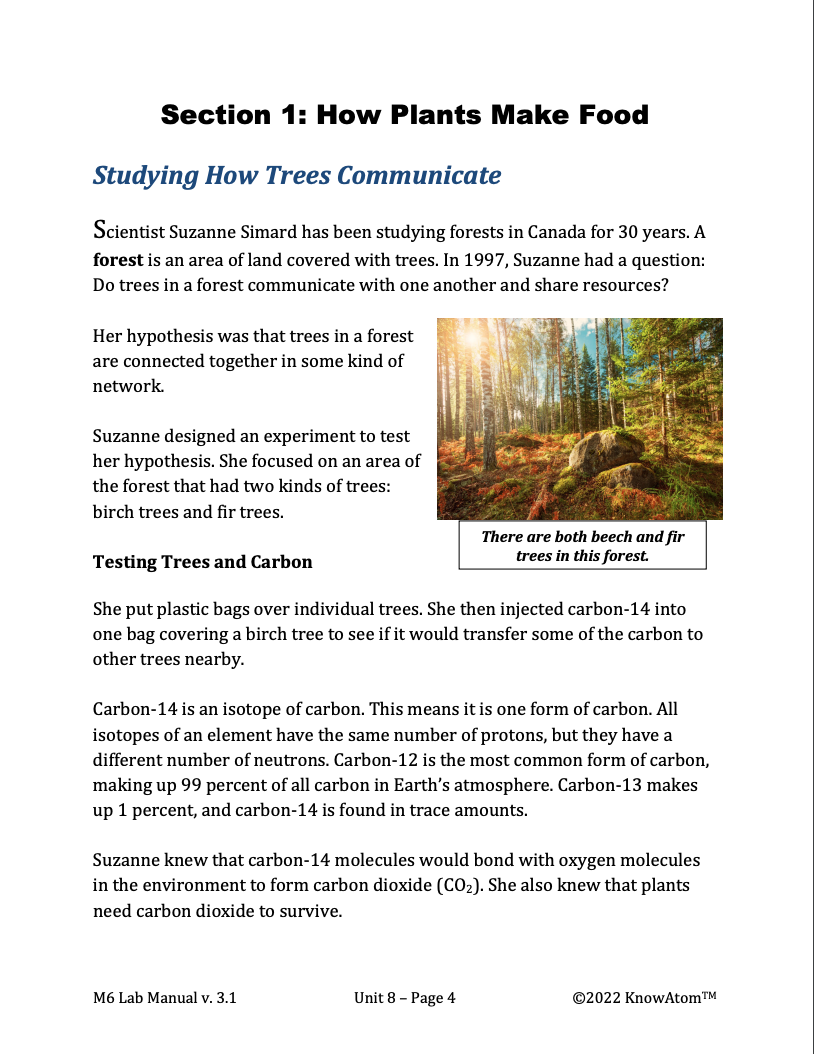
In this unit, students explore forest ecosystem phenomena, investigating the science phenomena of interactions between living things and the environment. In this lesson students discover the phenomena of tree rings and analyze how resource availability affects the ability of different organisms and populations to grow. This page is a high-level extract of this lesson.
Standards citation: NGSS Lead States. 2013. Next Generation Science Standards: For States, By States. Washington, DC: The National Academies Press. Neither WestEd nor the lead states and partners that developed the Next Generation Science Standards were involved in the production of this product, and do not endorse it.
